People
Maverick Lebanese Artist Saloua Raouda Choucair Dies at 100
She pioneered abstraction in the Arab world.
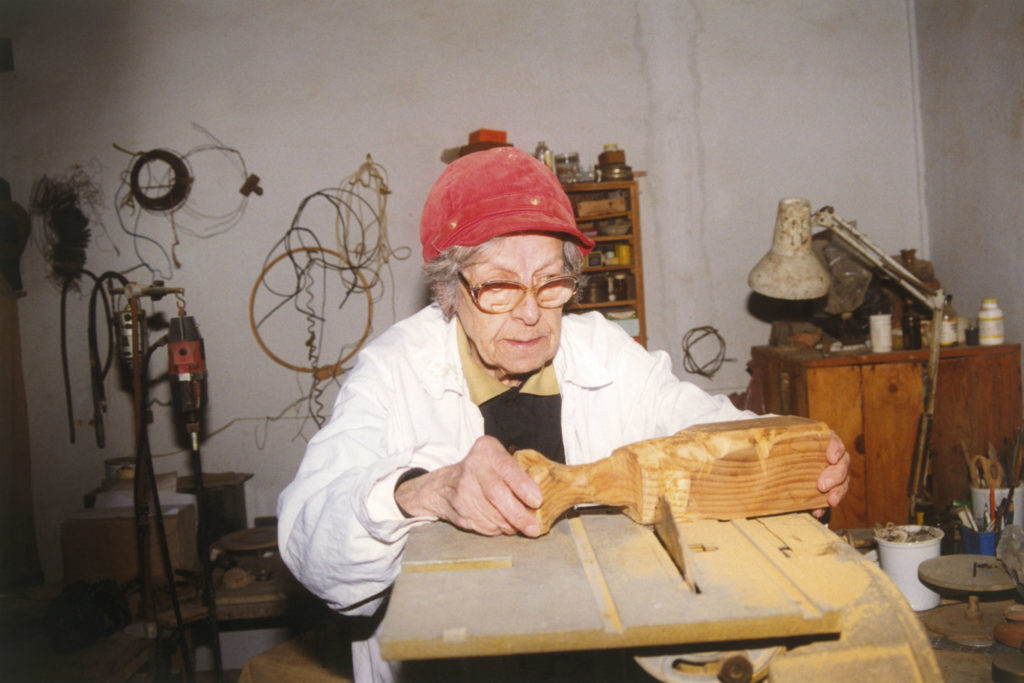
She pioneered abstraction in the Arab world.

Lorena Muñoz-Alonso

The Lebanese artist Saloua Raouda Choucair died on January 26 in Beirut, at the age of 100.
Choucair was one of the first painters and sculptors in Lebanon to work with abstraction, and her 1947 exhibition at Beirut’s Arab Cultural Gallery is thought to have been the first abstract painting show in the Arab world.
Choucair first started painting in a more figurative style in the studios of the Lebanese artists Moustafa Farroukh and Omar Onsi. In 1943, she traveled to Cairo, and became fascinated with Islamic architecture, an enduring influence in her oeuvre (she was also interested in Modernist architecture, with Le Corbusier being a favorite).
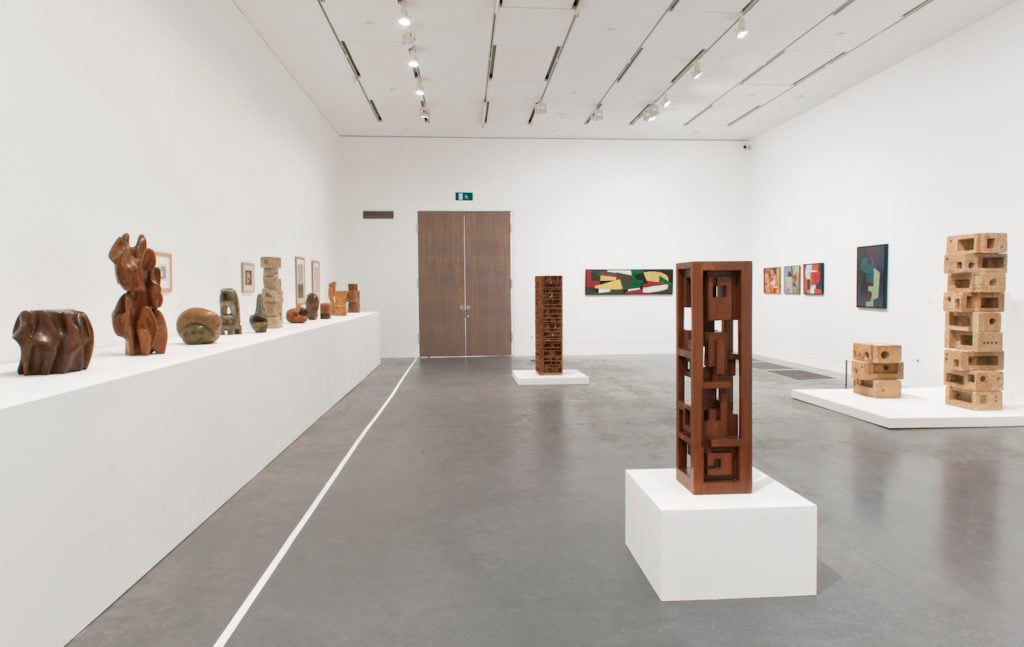
Installation views of Saloua Raouda Choucair’s exhibition at Tate Modern, 2013. Courtesy Tate Modern.
Later on—like her fellow Beirut-born artist Etel Adnan—Choucair spent a pivotal and formative period in Paris. In the French capital, Choucair studied at the École nationale supérieure des Beaux-Arts and at the Academia de la Grande Chaumière, and attended the studio of the artist Fernand Léger.
Although she returned to Beirut in 1951—becoming a fixture of the city’s intellectual scene as a writer—her stint in Paris fueled her interest in abstraction. In the 1960s she started working with sculpture, a medium that would become central to her practice and which she tirelessly explored through a wide range of materials, including clay, stone, brass, wood, fiberglass, aluminum, and plexiglass.
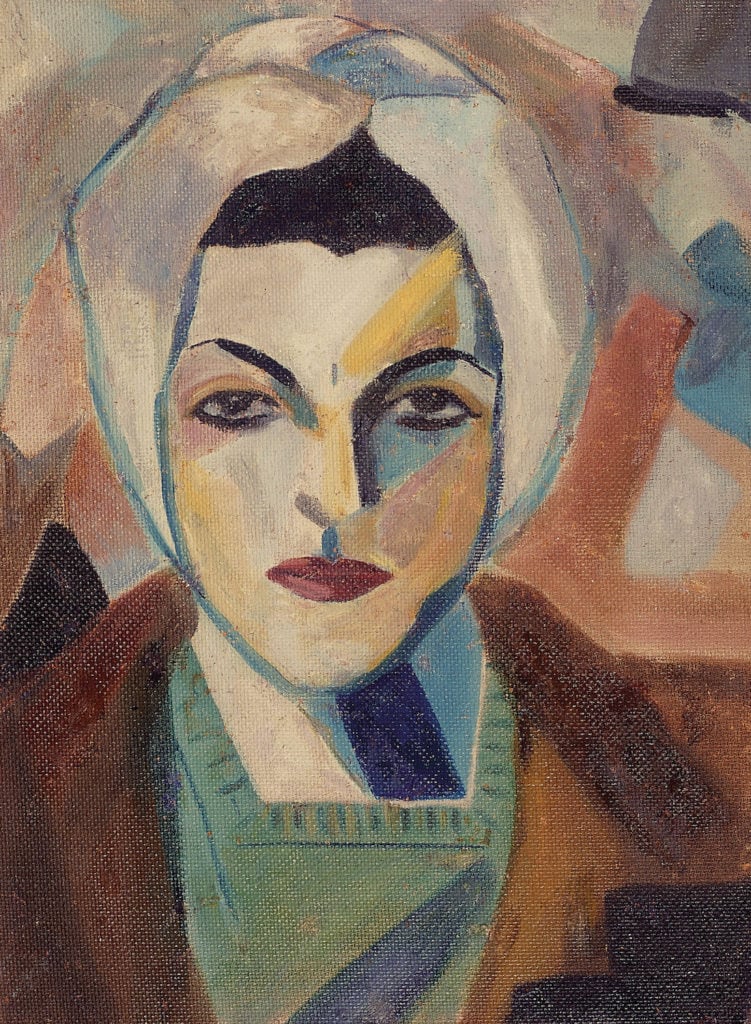
Saloua Raouda Choucair, Self Portrait (1943). Courtesy Tate Modern.
Choucair’s daughter, Hala Schoukair, was quoted in Artforum as saying, “She was an avant-garde who was inspired by the principles of Islamic art, but without any visual references to what people were accustomed to seeing in that art.”
“There was no correlation to calligraphy or Arabesque patterns. Her style is pure abstraction of form and line, just like a mathematical equation. Therefore my mother was often misunderstood, pushed aside, ignored, and left to be on her own.”
Much like Adnan, Choucair found recognition later in life. In 2013, she was the subject of a major retrospective at Tate Modern, which ignited interest in her oeuvre on an international scale.
Jessica Morgan, co-curator of the show, spoke to Artnews about the artist in 2015, saying, “We went over to her [Beirut] studio, and her entire life’s work was there, basically, because she hadn’t really sold anything. It was a complete revelation.”
At the time of Morgan’s visit Choucair had already been diagnosed with Alzheimer’s, and the Tate exhibition was facilitated by her daughter Hala.
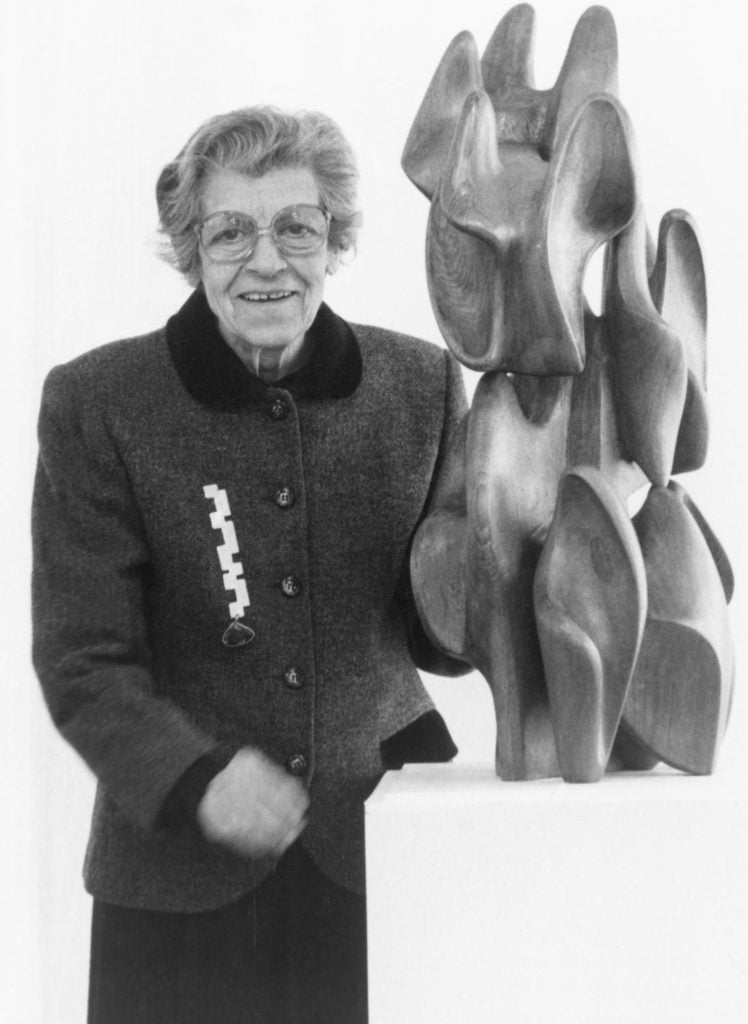
Saloua Raouda Choucair. Photo courtesy Agial Art Gallery / Saloua Raouda Choucair Foundation.
“All the timings were wrong with my mother. She started with abstraction when people in Beirut were just discovering Impressionism. In the ’60s, no one was paying attention to her and then when they started paying attention, the war started,” Schoukair told the New York Times in 2013.
In recent years, Choucair’s work has been featured at institutions including the Palais de Tokyo in Paris, the Whitechapel Gallery in London, and Haus der Kunst in Munich, where it can be seen in the current exhibition “Post War.”
In 2015, New York’s CRG Gallery staged a solo show of Choucair’s work, the artist’s first solo exhibition in the US.
“We first did a presentation [of Choucair’s work] at the ADAA and followed it six months later with an exhibition at the gallery. The goal was to bring the attention of American museums to the work of this amazing woman, artist, and pioneer,” Carla Chamma, from CRG Gallery, told artnet News. “It’s been an amazing journey to talk about her work and bring it to the American audience. Her legacy will go on.”
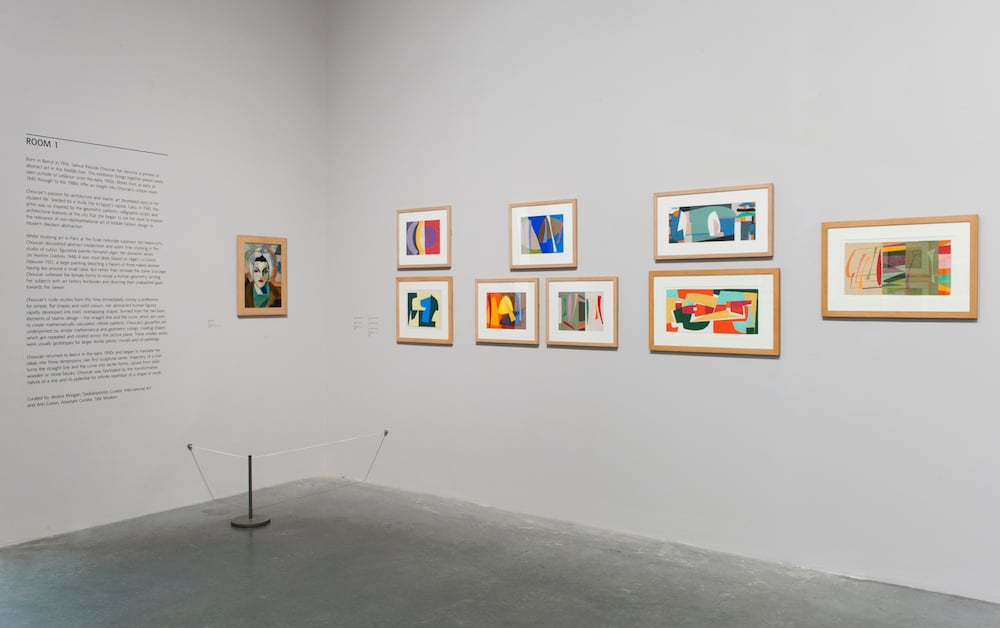
Installation views of Saloua Raouda Choucair’s exhibition at Tate Modern, 2013. Courtesy Tate Modern.
Choucair’s work is part of the collections of London’s Tate Modern, Paris’ Centre Pompidou, the Guggenheim Abu Dhabi, the Sharjah Foundation, Qatar Museums, the Al Qasimi Foundation in the UAE, the Art Institute of Chicago, New York’s Metropolitan Museum of Art, and the Pizzuti Foundation in Ohio.